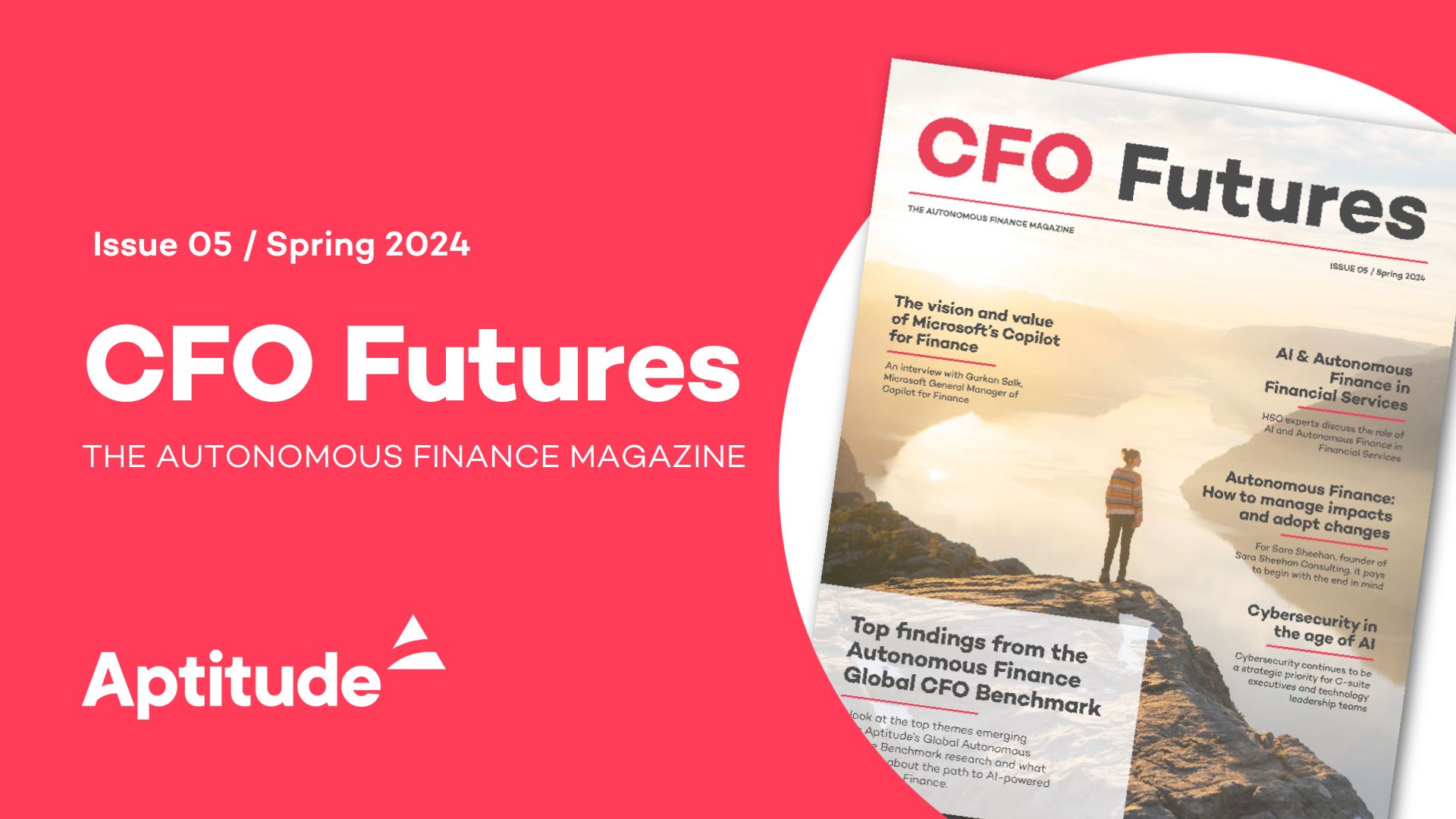By Sara Sheehan, Founder and Executive Consultant, Sara Sheehan Consulting, LLC
Change management is at the heart of any finance transformation. For Sara Sheehan, founder of Sara Sheehan Consulting, it pays to begin with the end in mind and understand the complexities of changing behaviors.
Extensive change management is required to support the finance function in implementing artificial intelligence, Autonomous Finance, and cutting-edge technology transformation projects that will genuinely change how the world works. The past 25 years have proven that digital transformation projects fueled by a traditional finance module can bring consistent processes, ways of working, and software features and functionality that allow the business users in finance to work smarter and have one data source for decision-making.
However, clients can set themselves up to fail with ERP implementations during global design by not making tough decisions on process changes that would facilitate smooth adoption of the system out of the box. Strong governance on business processes like procurement (e.g., buying approval and review processes with preferred and approved vendors based on spend categories, etc.) and minimizing or eliminating all system customizations play a big role in long-term success.
Now, we are at a critical juncture that will determine the future culture of finance teams and potentially even reshape the leadership role of the CFO. Adding the goal of achieving Autonomous Finance alongside a broader digital transformation brings four watershed moments for senior executives to consider how they best proceed, starting strategically with the end in mind.
How will Autonomous Finance impact the organization, roles, and employees? How can we clearly understand where work is getting done and by whom?
For those concerned that Autonomous Finance will impact their job, there is cause for concern. Employees will need to understand clearly how implementing the technology will change what they do, as it most certainly will. The best way to map out where work will be done in the future is by borrowing a Lean Six Sigma tool, SIPOC, to map out the process from beginning to end by role.
SIPOC stands for source, input, process, output, and customer. If you can map out your finance processes with this detail and confirm what individuals and systems may be involved in each step, you will have a clearer picture of where work has shifted.
The short answer is that employees can shift lower-value work to Autonomous Finance solutions and focus more on problem-solving, strategy, and decision-making. This will undoubtedly change the type of work team members do and what’s done by systems and tools. After the process is documented, you’ll be able to ascertain where work is done and may be able to redirect individuals to higher-value work within finance or even to other areas of the business like procurement or supply chain.
How will Autonomous Finance impact governance, and will principles of appropriate use support behavior change? What decisions are required on user access to functions or data?
It is critical for organizations implementing Autonomous Finance to determine the appropriate use and governance, as well as conduct reviews of work completed by AI tools. Leaders must have a clear point of view on governance that they share with staff early and often during the implementation. Appropriate use could include a list of the types of functions, tasks, or prompts with parameters so employees have a clear picture of what tasks will be automated. For example, clearly understanding the prompts to complete month-end or quarter-end will help all concerned.
Conversely, employees must know that requesting a list of all salaries and bonuses at the VP level and above is unacceptable to satisfy their curiosity. Just like implementing any ERP system, user profiles and access to specific functions and data must be very clear and part of the implementation at the outset.
Finally, individuals must know they are responsible and accountable for thoroughly reviewing work completed by Autonomous Finance solutions, as errors may need to be corrected before release. The review process is a critical step.
Painful lessons will undoubtedly be forthcoming for businesses relying solely on system-generated finance results. Further, reviewing the quarterly financial reports developed by an Autonomous Finance solution before releasing performance to investors is critical for a public company.
How do these technologies impact finance, and what mitigating actions must be implemented to ensure finance can operate post-go-live and ensure leaders get the information needed for decision-making?
The work to understand business impacts must be considerable and detailed across all finance teams using Autonomous Finance solutions. This will require a facilitated discussion with subject matter experts and process owners to review how the process is done today and how it will be done in the future. Teams will also need to document what is changing, the risk and level of impact on the business, and what needs to be done to make sure these impacts are addressed.
This is a resource-intensive effort, and it may require subject matter experts and their teams to come together with a change leader for a series of meetings to document what’s changing and develop the mitigating actions that need to be completed. If the work is done at too high of a level, there will undoubtedly be critical changes to the business that are not addressed, leading to a dreaded fire drill to correct problems that could have been avoided.
Finally, employees need to understand, according to their role, what they will need to stop, start, and continue to do to support a successful implementation of these technologies.
How do I get my finance team to adopt new ways of working?
Behavior change in any context is difficult. We are changing what we do. When it is a routine task that has a well-developed habit supporting it, it’s even harder to change the behavior.
According to James Clear in Atomic Habits, it takes approximately 66 days to form a habit fully. However, once it’s formed, a neural connection is established to send messages in our brain to complete a task. It’s hard for the brain to break a habit once that neural connection has been made. That’s why organizations need to fully understand what behaviors need to change at the task level regarding what employees or business users will do differently in the future and what new behaviors will support a healthy organizational culture. This will require a planned approach throughout 30, 60, and 90 days to embed new behaviors. Without a planned approach, the behaviors will not stick.
Every part of the change strategy matters. Each aspect of a solid change management strategy is essential; all parts come together to support success. The leaders need to be visible and committed.
It would be helpful if a mobilized, active change network were in place to distribute communications and collect feedback or sentiment from the organization. A change agent network is the first line of defense in a significant project that can solve problems locally, distribute communications, and collect feedback from their teams. Selecting change agents across the organization at varying career levels will help you get a clear picture of the sentiment in the organization, understand how things are going locally, and identify resistance or barriers to success.
A robust communication strategy is also critical to program success. Understanding your past organizational change history and current organizational change readiness is helpful context that can provide input to communication and training plans. Thorough training of end users engaging with Autonomous Finance solutions are required.
In summary, Finance teams are about to embark on a considerable journey, and change management will certainly help them achieve the adoption of new behaviors. It’s not an easy transformation to navigate, so start getting prepared early and don’t hesitate to ask an expert for help.
Previously published in CFO Futures: An Autonomous Finance Magazine (Spring 2024)



